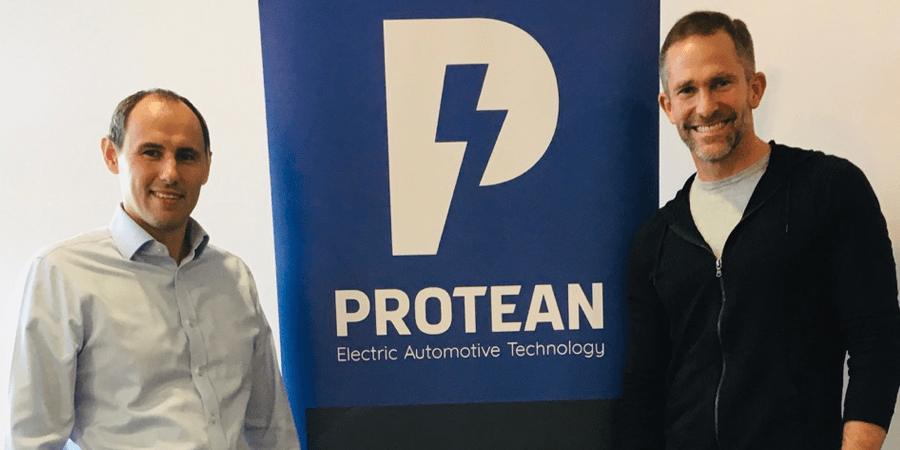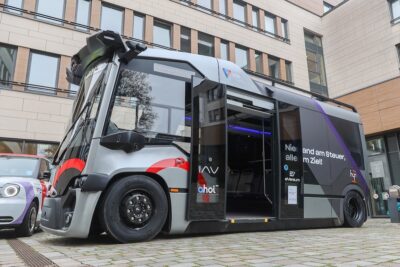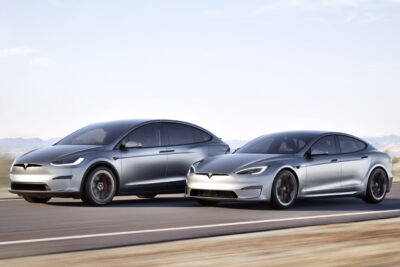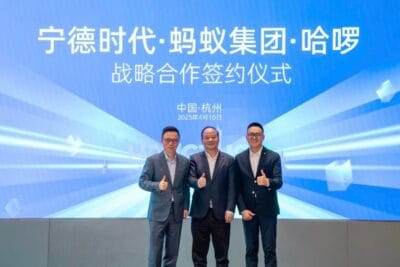Interview: Protean CEO Andrew Whitehead & Local Motors’ John B. Rogers on synergies & autonomy
The British company – that now belongs to Evergrande through NEVS – just launched mass production of its hub motors. Protean CEO Andrew Whitehead and CCO Ben Boycott joined the conversation to talk about synergies between start-ups, challenges of autonomy, and how to break into the market for e-mobility.
John, please tell us about the state of Olli, your e-shuttle. Is it a self-driver yet?
John B Rogers, CEO Local Motors (JBR): Sure, I can start there. So we debuted our pilot vehicles in both Berlin and Washington DC and from there developed Olli 1.0, which we made both in Tennessee and Arizona and Berlin. Then we put these EVs in about eight cities on short term fleet deployments, took more feedback and made changes to the vehicle and then launched Olli 2.0 this past summer. So it’s been a constant evolution. During that time, we moved our German facility from Berlin to Munich where we have a new facility in partnership with Airbus.
What about the 3D-printing process?
JBR: Olli 1.0 was only partially 3D-printed, about 30 per cent, and now Olli 2.0 is about 80 per cent 3D-printed by volume. Also, one of the core changes that we made was to change the drive system in between Olli 1.0 and 2.0 – we needed one that was stronger, smoother, quieter, and better packaged. We had already been talking to a couple of hub motor providers like Schaeffler, and there were suppliers thinking about hub motors, like Bosch, and then we met the Protean team.
Andrew Whitehead CEO Protean (AW): Yes, we met at the Battery Show in Detroit.
Before we get deeper into the motor, could you say more about the feedback you’ve obtained for Olli and put a few numbers behind those autonomous driving trials?
JBR: Sure. One of the key pieces of feedback from customers was to make it quieter, make it wider, all form factors. This was early feedback at the EUREF campus in Berlin and the National Harbor in Washington DC; both sites had one vehicle. We were learning.
Once in operation, we found details, for example, that how a steward operates on board is an important thing. Early on, people like to ask the steward a lot of questions. That’s a problem because if they’re getting many questions, they’re not paying attention to the road. So we had to direct people toward either a secondary steward or provide other information so that the steward could do their safety job onboard. Also, we had a lot of gear lash, which just means there was a cogging or small delay when you start. And people were unnerved by that, so if Olli chatters before it moves, people think maybe the autonomy system is having a problem when in fact it’s just the drives.
We also took feedback from people in accessible mobility, as the commissioner for disabled people in New York City, who said people in the wheelchair often move together, so we needed to make more space in an Olli. One of the things about packaging Protean was that we were able to get a second wheelchair in the vehicle and turn around and get off with the enhanced manoeuvrability. And these are not small feats to achieve.
Yes, let’s move on to the drive now. Andrew, what was Protean’s incentive to work with Local Motors?
AW: So we met four, five years ago. We had been looking for mainstream OEM customers because that’s where the volume was and still is. But as a small company, we also understand that finding good partners where you can see a long-term future is very important, and the risk for an OEM to adopt new technology is considerable. And when you’ve got two companies who are both trying to do something new, there is a synergy of reducing each other’s risk by working together. And we saw that very much in Local Motors, what they were trying to do with autonomous vehicles, which were very new five, six years ago. The 3D-printed vehicle was also unique, and our hubs were still relatively untested back then. So there was a synergy of risk mitigation and also a synergy of kindred spirits and both trying to qualify our respective value propositions together.
John, would you like to add your perspective from Local Motors?
JBR: Yes, I’ve got to answer that. I often think start-ups have a tough time working together because it is likely that you would end up hurting each other’s business model because start-ups need to be nimble to go in different directions. But put that aside. The synergy of risk mitigation was very clear between us because we were strategically aligned with what we needed to do.
And when you think about it, there are so many reasons why suppliers and new OEMs have a hard time breaking into the market. Most car companies today consider the motor to be part of their core intellectual property. So they don’t want to have a supplier come along and say ‘I’m going to take away that core piece of your technology’.
Also, I heard an executive from a large supplier the other day say, ‘you know, Tesla, ask us for an ABS, and we delivered one for them, and it worked okay. When Mercedes asks us for an ABS, there is no such thing as providing a component that works “okay”. That’s a really big statement because that means that a company that is as valuable as Tesla is now put a product on board before the supplier felt it was vetted to the degree of another company like Daimler. And I think that says something about how the industry can move forward but take risks like that.





0 Comments